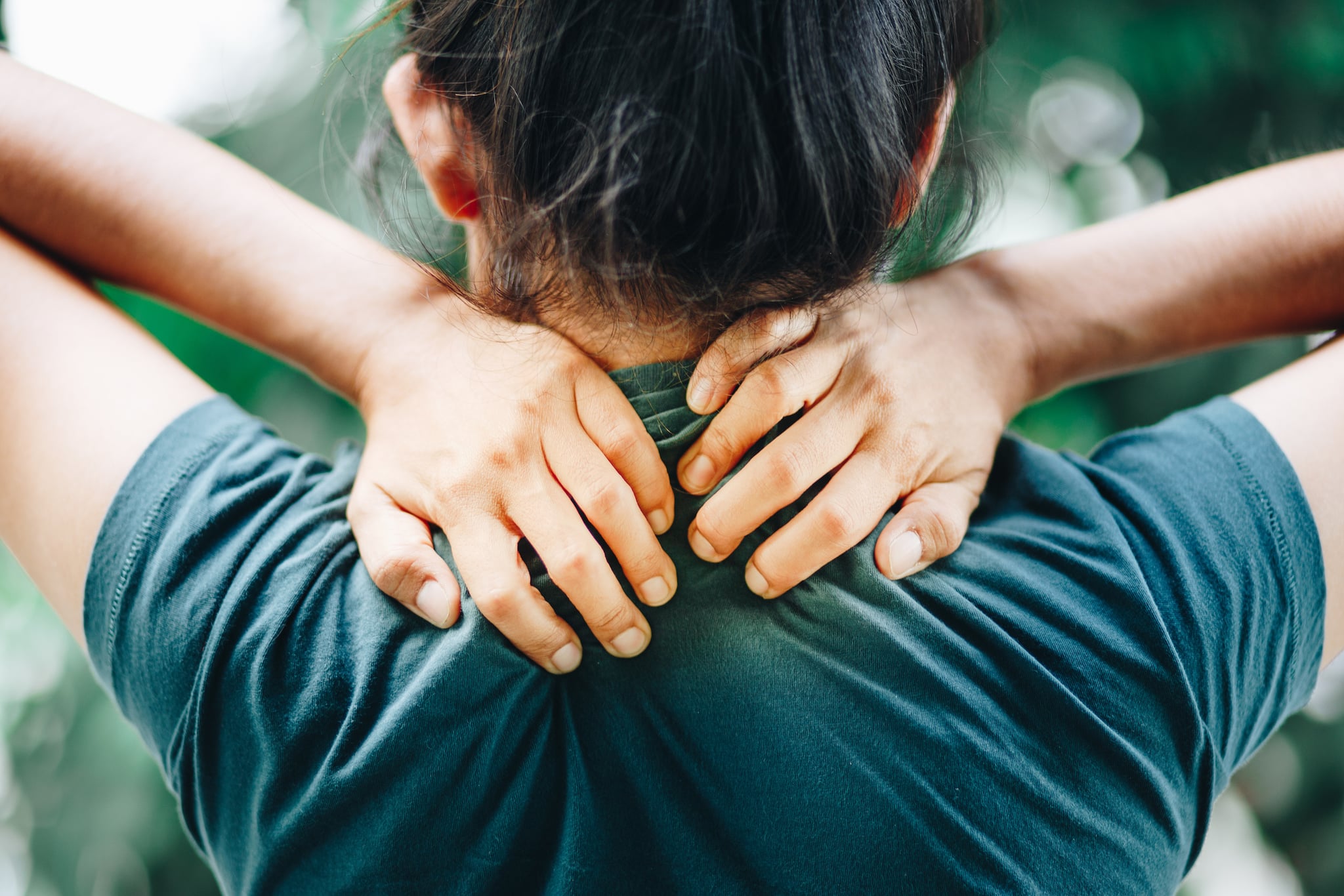
Heres What a Muscle Knot Really Is, According to a Physical Therapist
On and off for what seems like forever, a muscle knot has tormented the same exact spot on my upper back — right above my shoulder blade, just to the left of my neck. The dull pain makes me fidgety, but also tense and rigid. I grab and pull and massage at the sensitive spot until I either feel some sort of release or forget about it altogether. The other day, though, coincidentally while dealing with the nagging pain of a muscle knot, I realized that I didn't even know what muscle knots really were, or how they're formed. So, I tapped Curtis Wu PT, DPT, OCS, SCS, CSCS, clinical specialist in rehab at HSS Paramus, for an explanation. "Muscle 'knots,' trigger points, and myofascial pain syndrome are terms that are used to describe the experience of sensitive spots in soft tissue that are commonly associated with injury, or in people with persistent neck/back pain," Wu says. The Mayo Clinic also notes that repetitive motions, overuse, and poor postures can also u..

On and off for what seems like forever, a muscle knot has tormented the same exact spot on my upper back — right above my shoulder blade, just to the left of my neck. The dull pain makes me fidgety, but also tense and rigid. I grab and pull and massage at the sensitive spot until I either feel some sort of release or forget about it altogether.
The other day, though, coincidentally while dealing with the nagging pain of a muscle knot, I realized that I didn't even know what muscle knots really were, or how they're formed. So, I tapped Curtis Wu PT, DPT, OCS, SCS, CSCS, clinical specialist in rehab at HSS Paramus, for an explanation.
"Muscle 'knots,' trigger points, and myofascial pain syndrome are terms that are used to describe the experience of sensitive spots in soft tissue that are commonly associated with injury, or in people with persistent neck/back pain," Wu says.
The Mayo Clinic also notes that repetitive motions, overuse, and poor postures can also up your risk of developing these trigger points.
They can be experienced anywhere in the body, but are most commonly noted in the upper back/neck, shoulder, low back, and around the hip. While Wu says muscle knots are associated with very real symptoms, there hasn't been a consistent explanation on how they're formed — in fact, he says there are many different theories behind the tender spots that cause such discomfort.
Some explanations, Wu explains, point to micro-spasms or cramps within the muscle that occur for a variety of reasons, like direct injury and overworking or underworking the muscle. Wu says that these "micro-cramps theoretically cause an accumulation of 'waste' products that may cause pain." However, Wu also notes that a challenge in finding the underlying cause of muscle knots is because pain is of a multifactorial nature.
"Pain can be influenced by any combination of physical, health, lifestyle, affective, cognitive, and environmental factors. As a result, it may be more important to understand trigger points as a symptom and not the cause of a person's pain experience. The need to identify some of the contributing factors to a person's pain and to address those factors is the most important for long-term benefit."
The effectiveness of muscle knot relief varies from person to person, Wu says, but there are many ways to help reduce the pain of a trigger point.
"People can get relief with massage, acupuncture, ice packs, hot packs, and physical aRead More – Source

